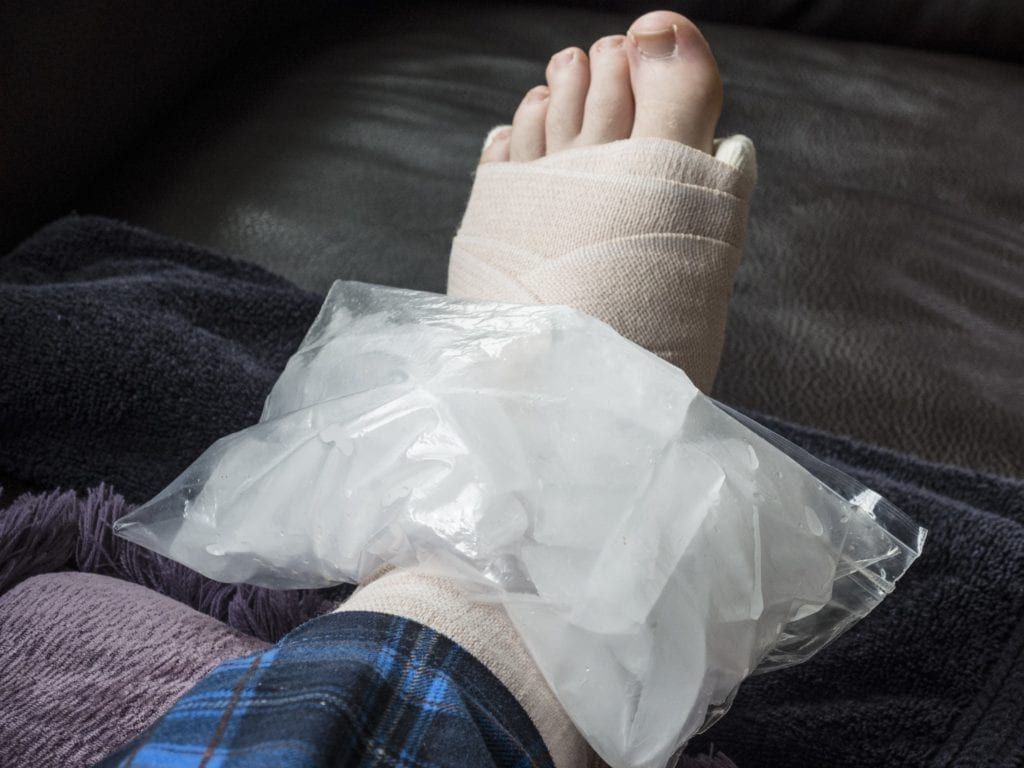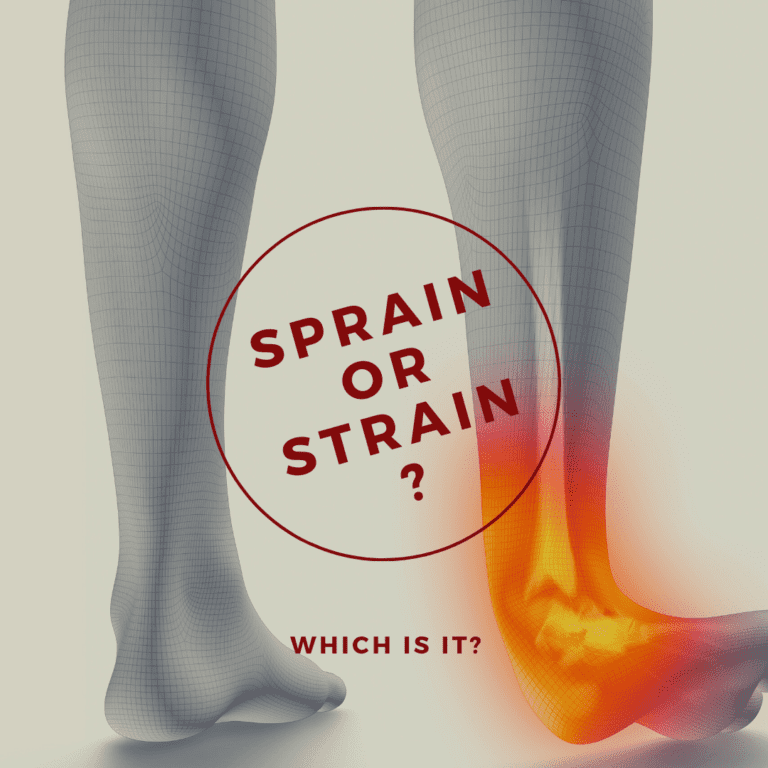Did you know that the U.S Department of Health and Human Services estimates that around 8.6 million sports injuries occur every year? Of these 8.6 million injuries, about 42% affected the lower extremities, 30% affected the upper extremities, and around 16% affected the head and neck. When it comes to sports injuries that affect the lower and upper extremities, sprains and strains are a commonly seen injury. However because their names are so similar, many people are unaware about the differences between these two types of injuries. So, what exactly is a sprain, what is a strain, and how do you know the difference?

A sprain occurs when the ligaments are torn or overstretched. Ligaments are tissues that hold bone to bone together in a joint. The most common area for a sprain to occur is the ankle, especially when walking on an uneven surface or landing awkwardly from a jump. Other areas that can become sprained include: the knee when pivoted too far, the wrist when overextended during a fall, and the thumb when overextended during activities like skiing or racquet sports.
A strain occurs when the muscles or tendons are torn or overstretched. Tendons are tissues that hold muscle and bone together. In some cases, strains are also called pulled muscles. The most common area for a strain to occur is in the lower back and in the hamstrings. However, strains can also occur in the Achilles tendon as a result of quick starts or jumping, in the hands as a result of gripping, or in the elbows as a result of throwing or racquet sports.
Although both sprains and strains are caused by damage done to different tissues, they still have common symptoms. This is another reason why it is so difficult to differentiate the two. Symptoms of sprains include pain, swelling, bruising, limited joint mobility, and hearing or feeling a pop at the time of injury, while symptoms of strains include pain or tenderness, redness or bruising, limited mobility, muscle spasms, swelling, and muscle weakness. As you can see, these symptoms are highly similar. The main difference between the two in terms of symptoms are that sprains can be accompanied by a popping sound, and that strains are generally accompanied by muscle weakness or spasms.
To diagnose a sprain or strain, your doctor will palpate the affected area to determine points of tenderness. They will also evaluate the area for any swelling or bruising. When it comes to determining whether a sprain or strain has occurred, your doctor will look for subtle differences. For example, sprains tend to produce bruising, whereas strains may be diagnosed by feeling for muscle defects. In some cases, additional diagnostic tests will be used to help make an accurate diagnosis. These tests can include x-rays or MRIs to rule out breaks or fractures, and ultrasounds to examine the underlying muscle tissue.

The treatment for mild sprains and strains is to follow the RICE technique:
- Rest: avoid using the affected joint
- Ice: ice the affected area for 20 minutes on, then 20 minutes off and repeat as much as possible for the first 24-48 hours.
- Compression: wrap the affected area in order to reduce swelling
- Elevation: elevate the affected area above the level of your heart or at least parallel to the ground.
In some cases if a sprain or strain is severe, surgery may be required to repair the damage. This will likely be the case if the ligaments, tendons, or muscles have been torn.




